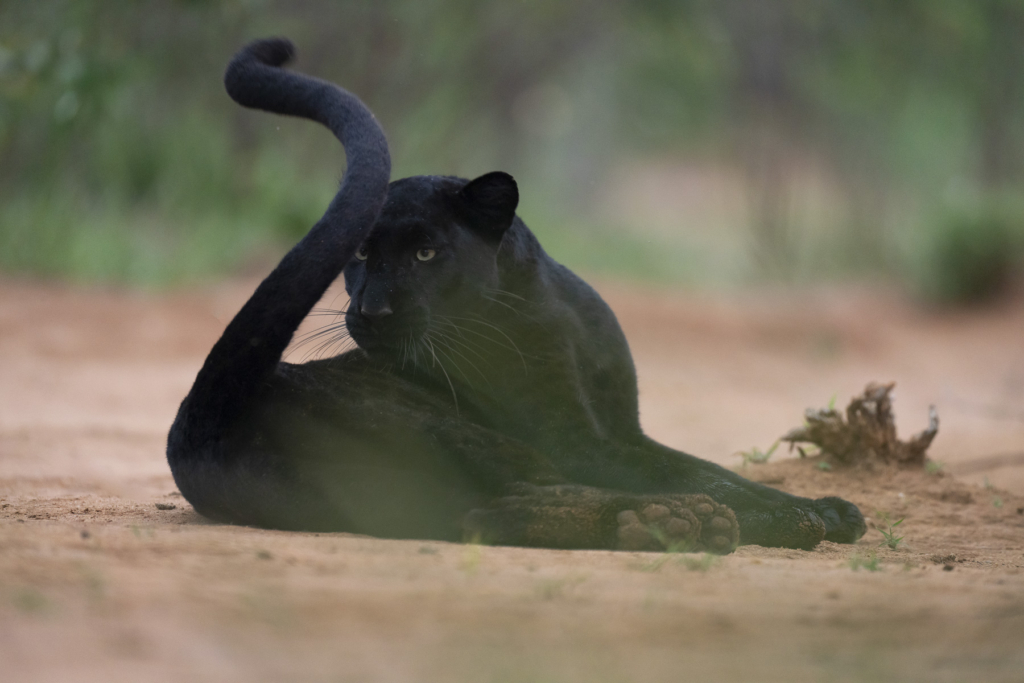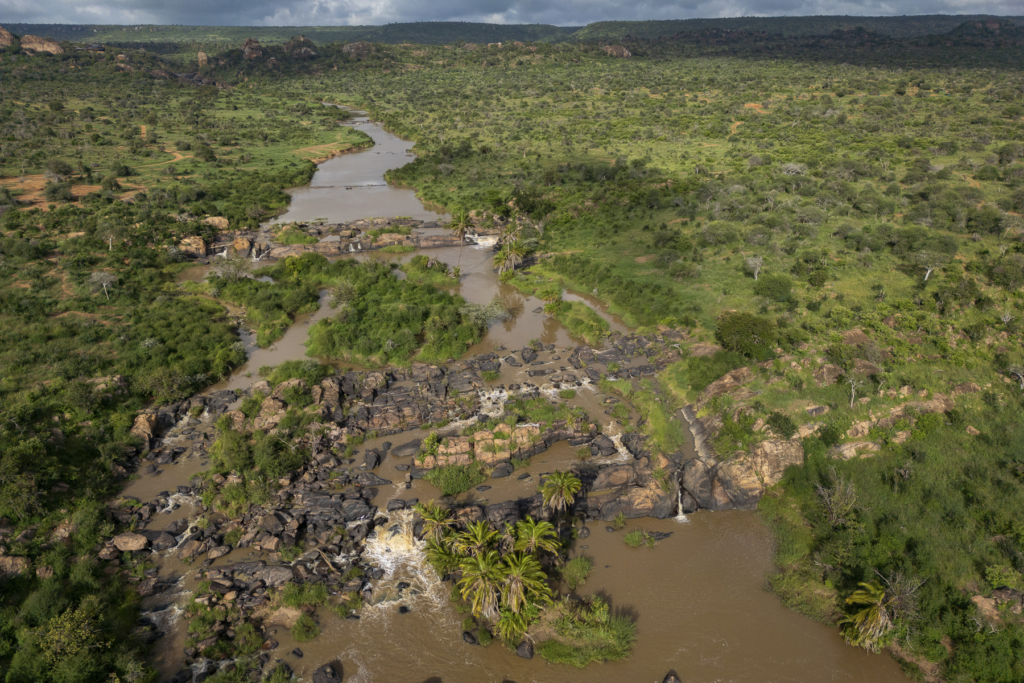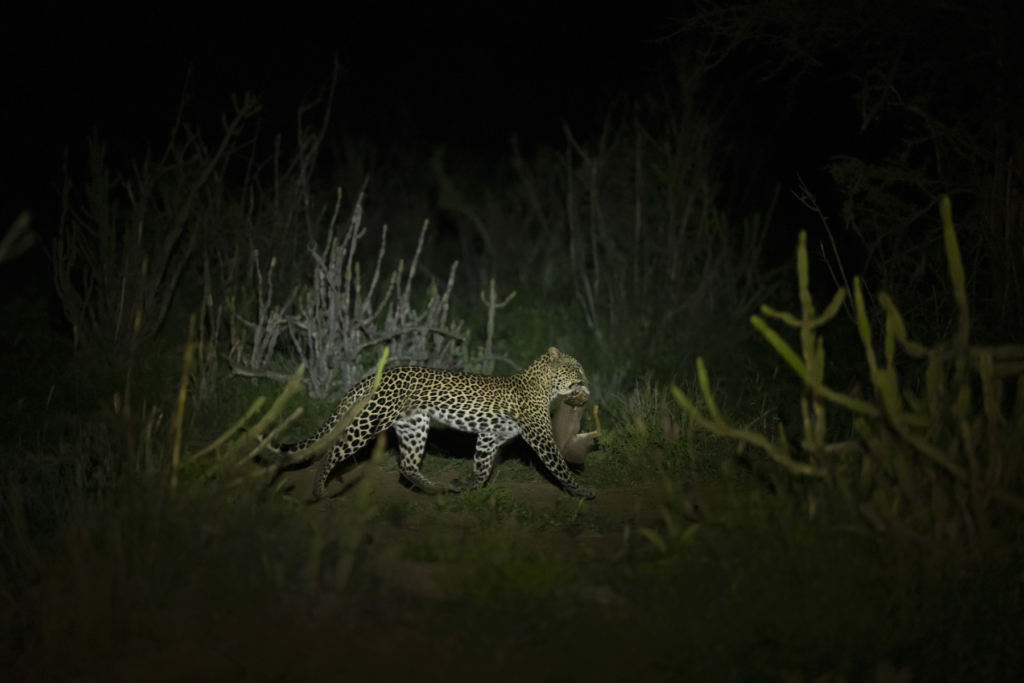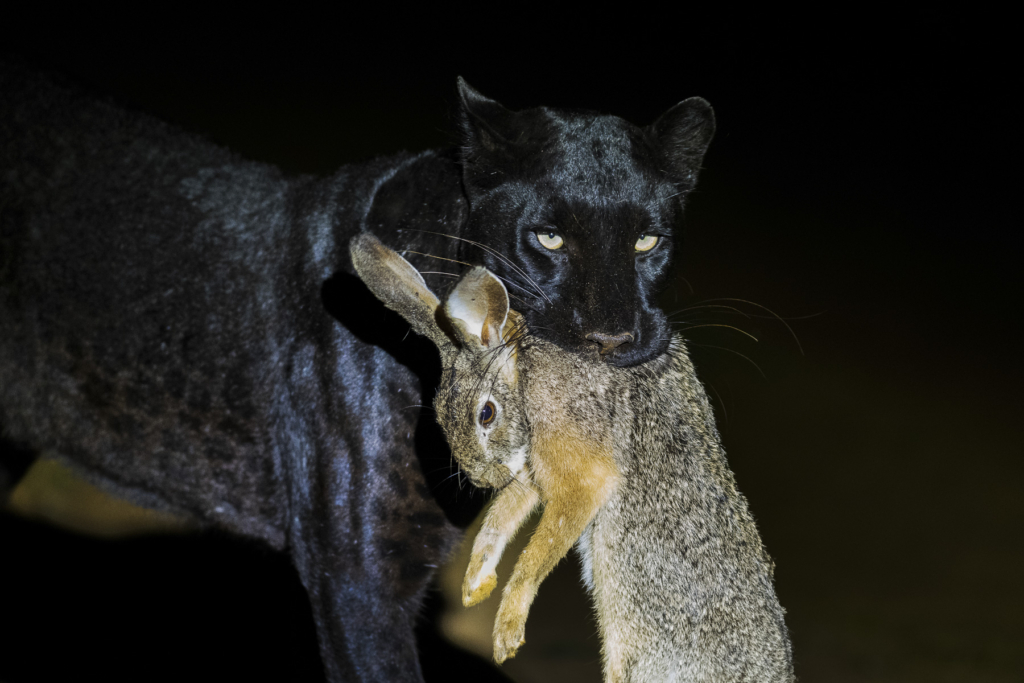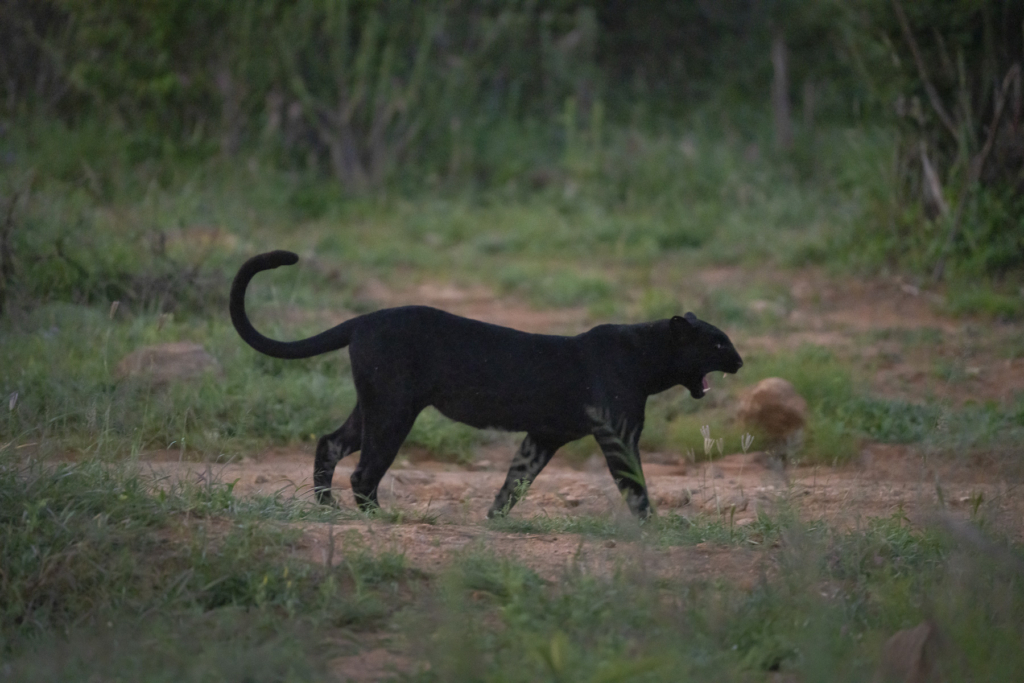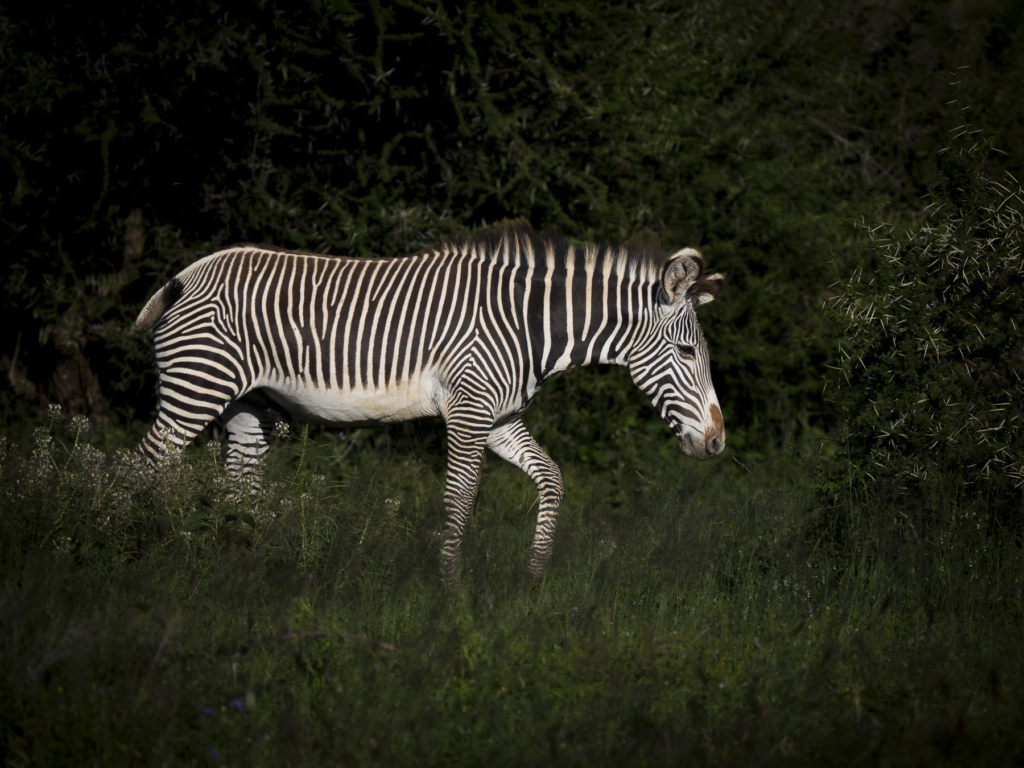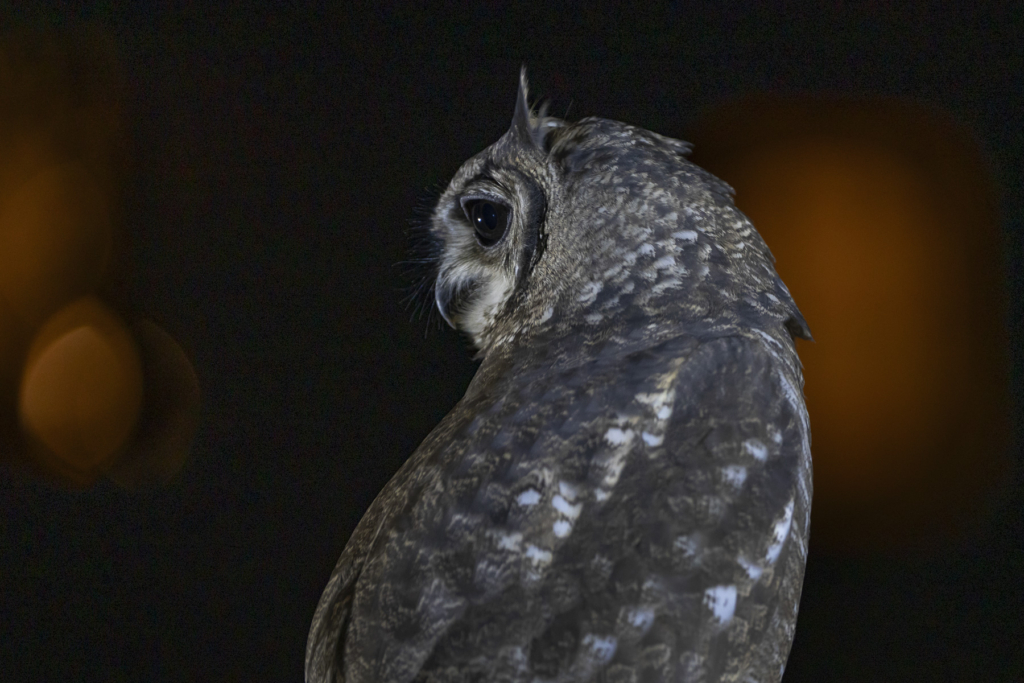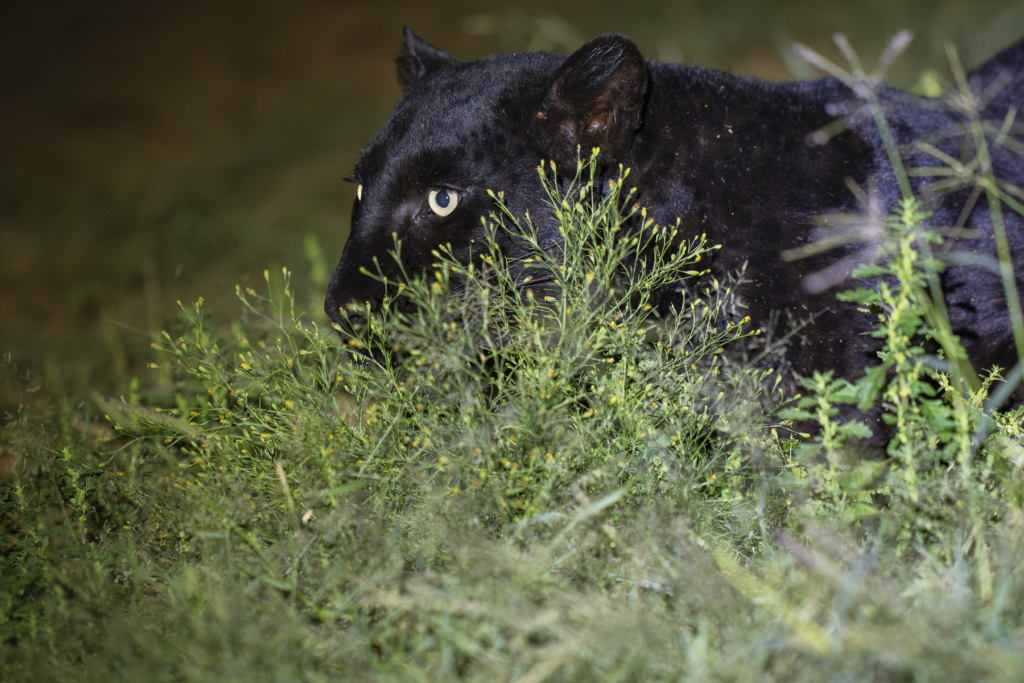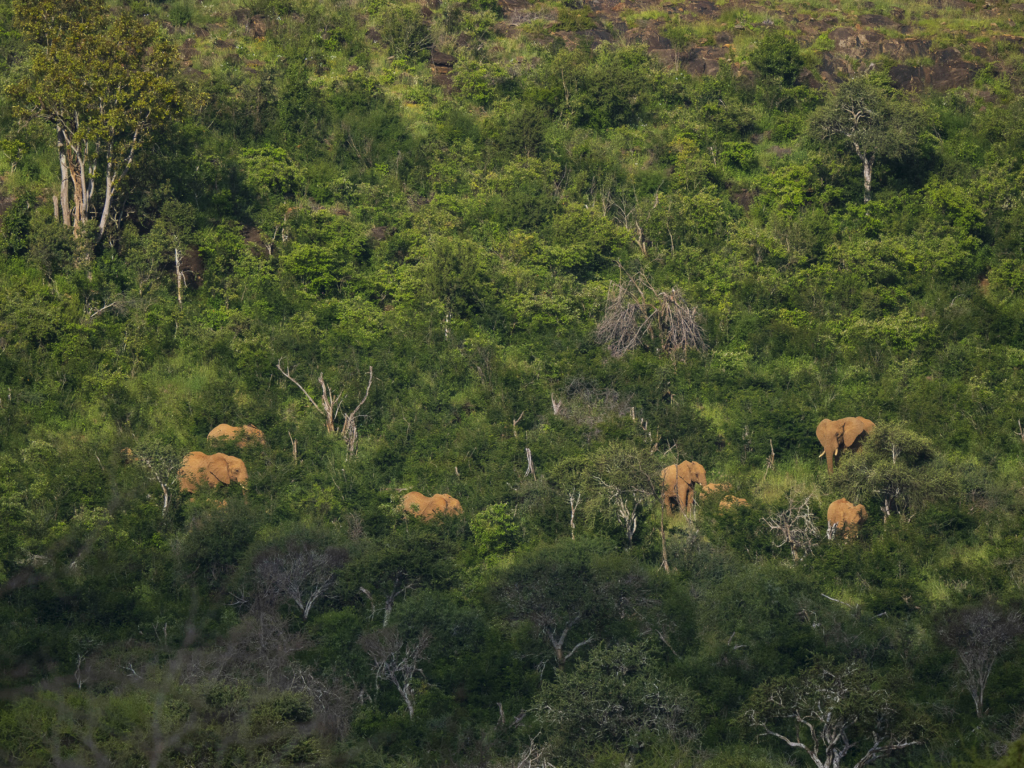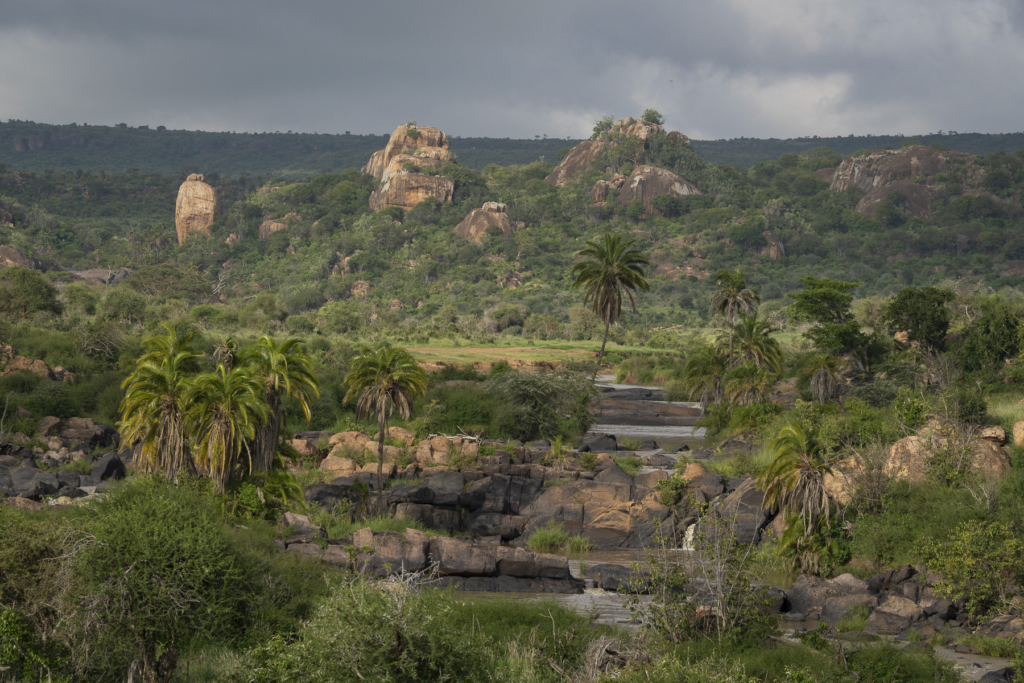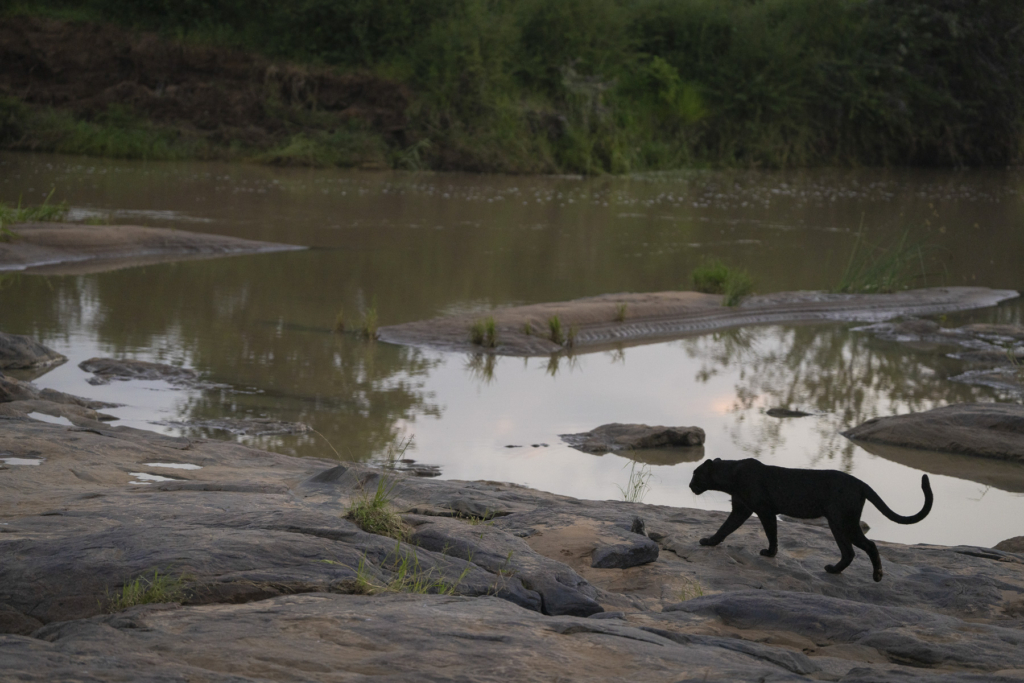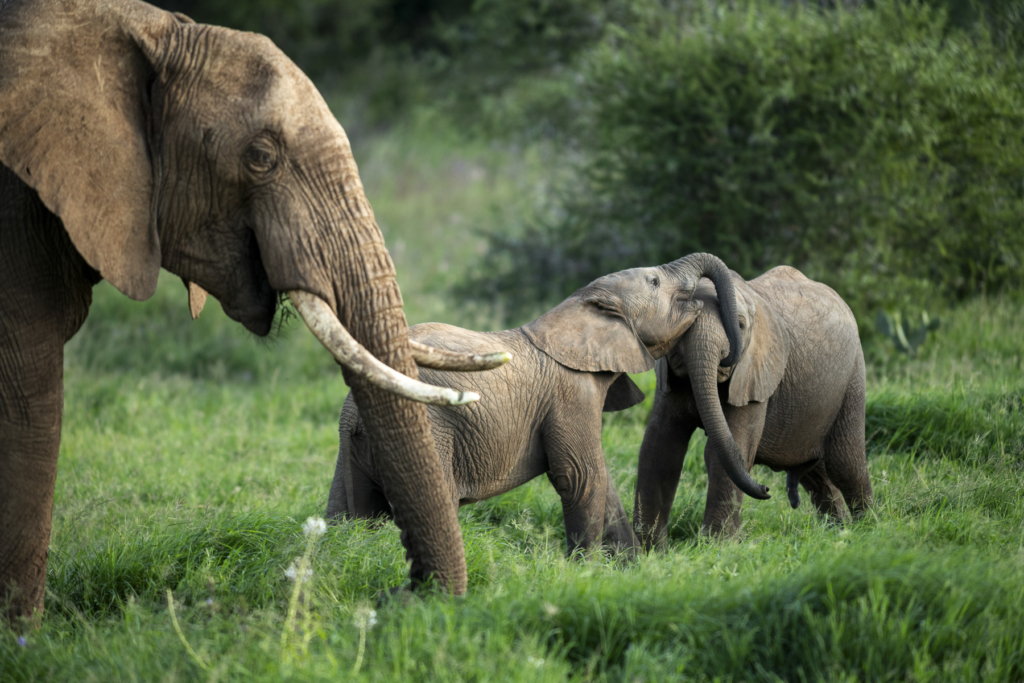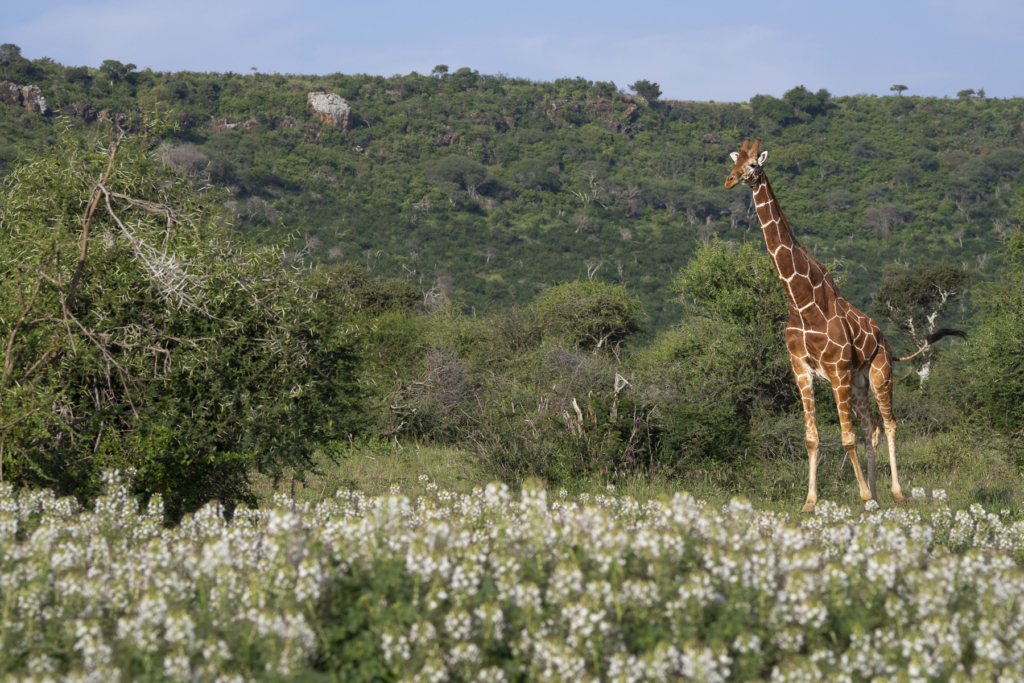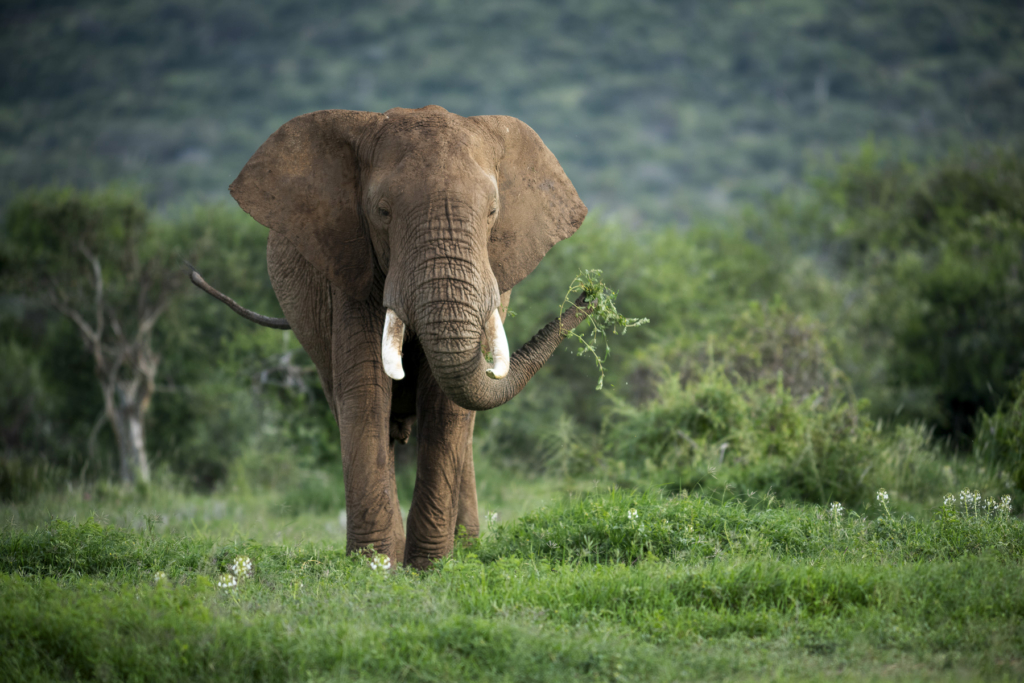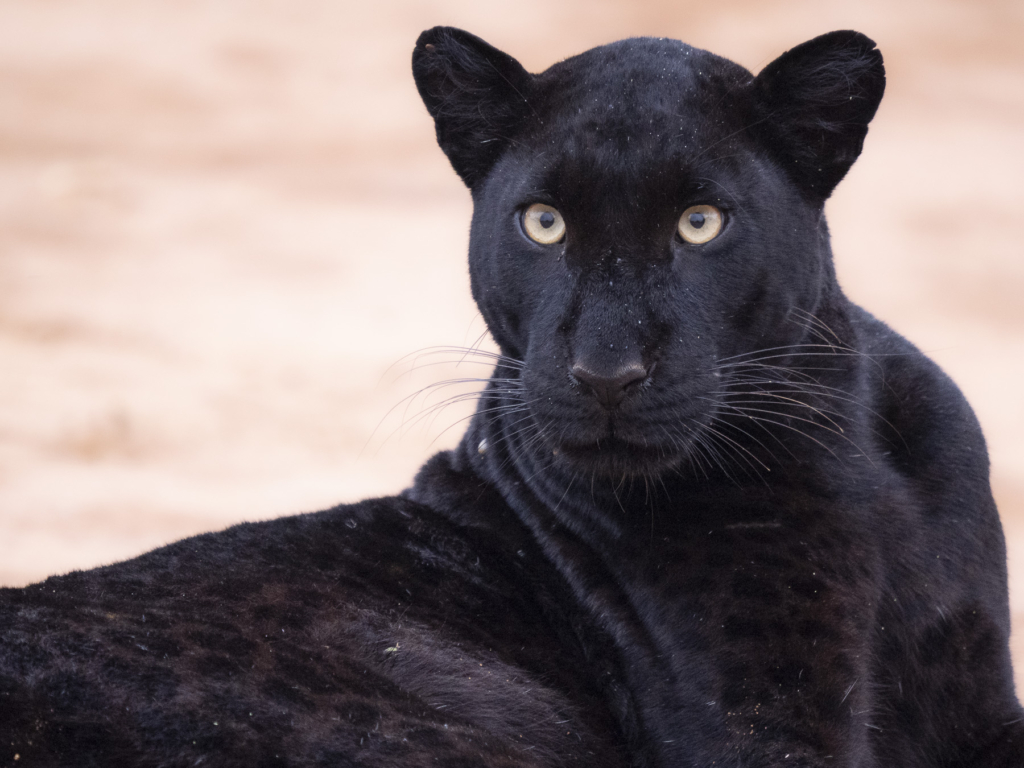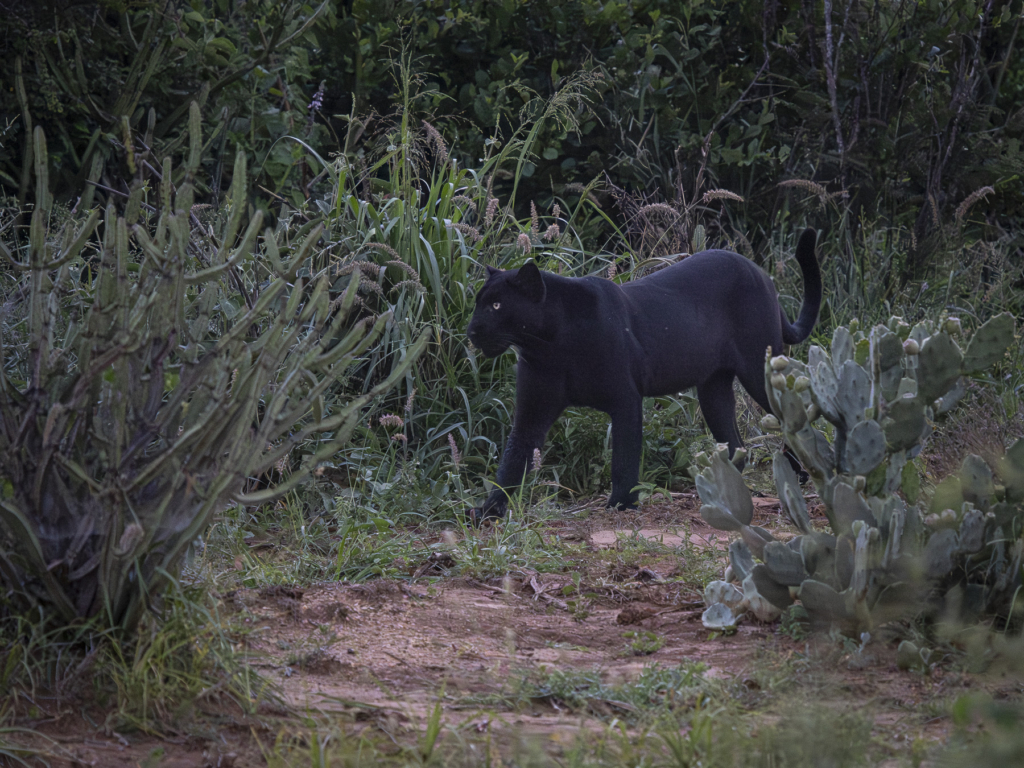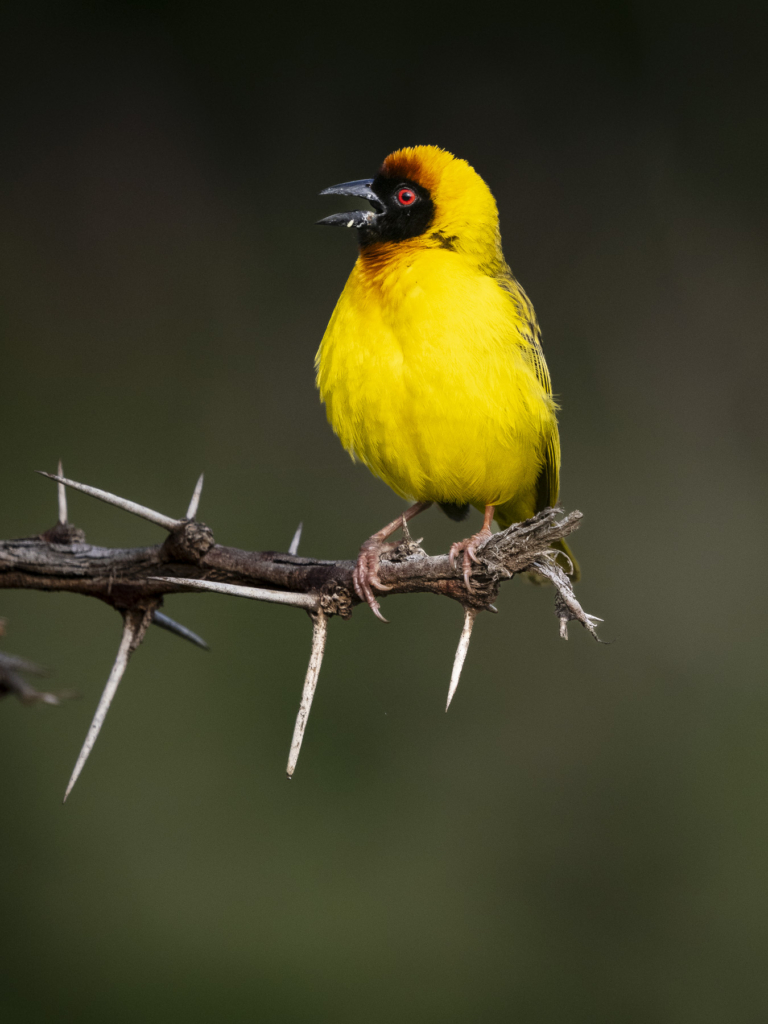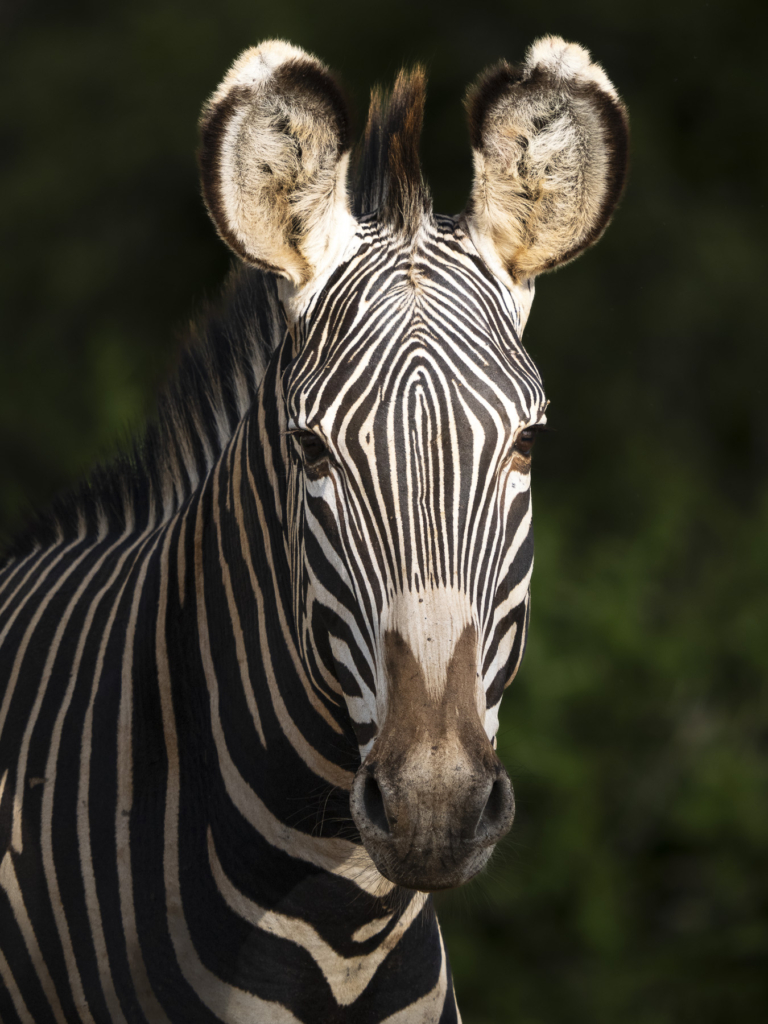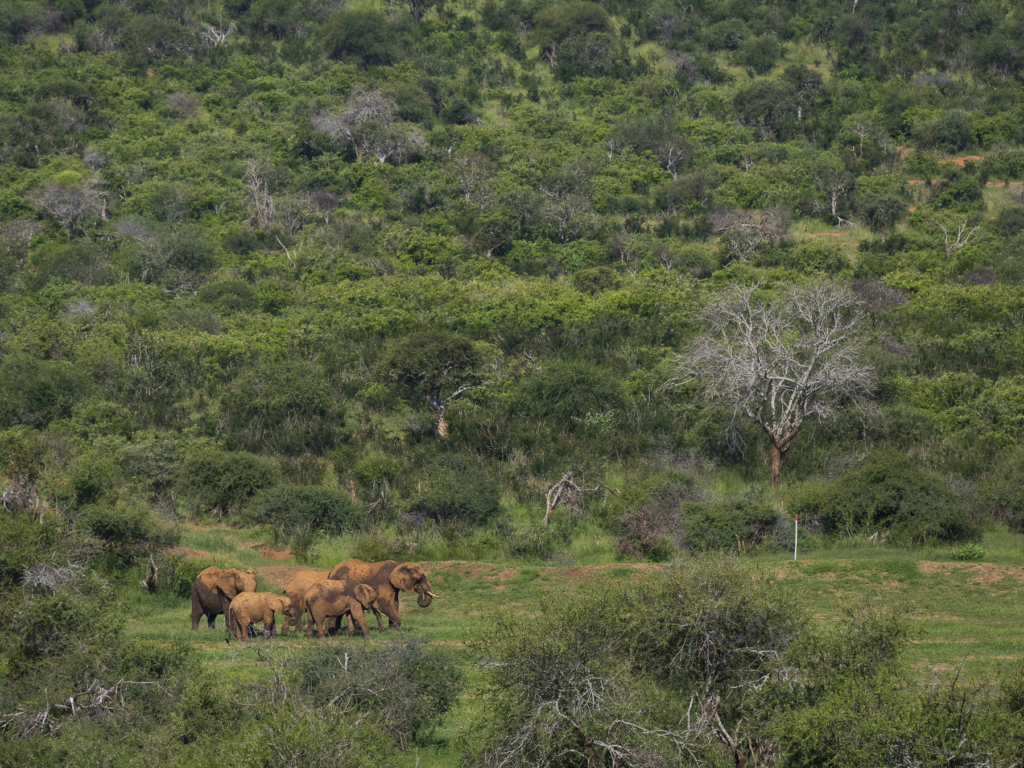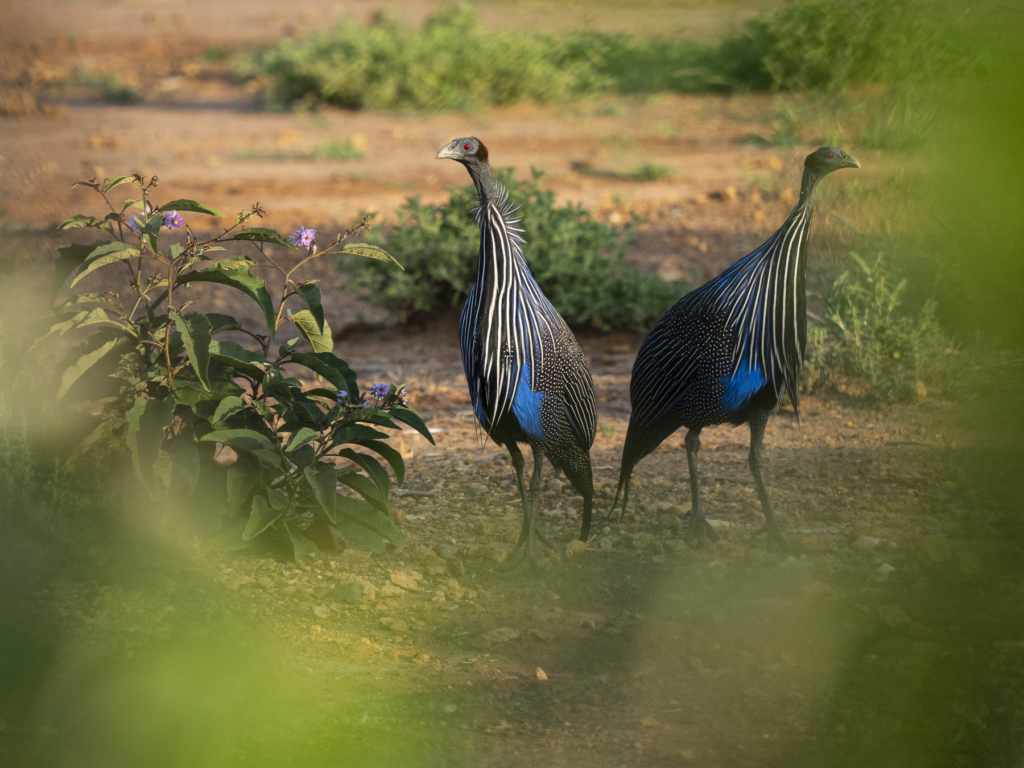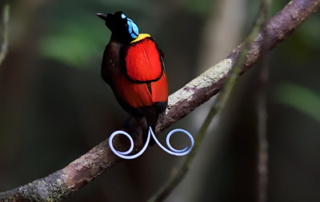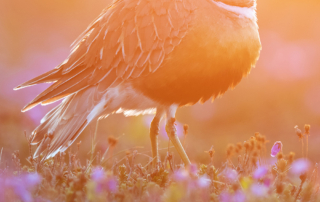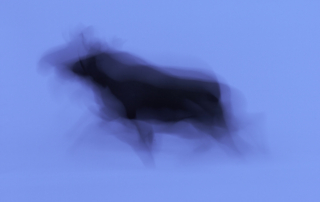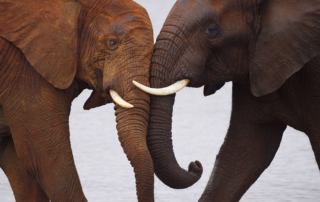
The sun is slowly setting and the afternoon light is becoming increasingly attractive to photograph, but here in Africa the last light of the day changes quickly and we know that it is dark soon. We have parked our safari vehicle along a river, silent and expectant, we are waiting for our motif to come down to the river to cross it on the stones that form a way over. The minutes go by and the light is fading quickly, our so sought after motif is not showing herself and then the darkness comes and takes over the African night. We listen out into the darkness, at first it is completely silent but then the silence is broken by warning sounds from some dik -dik antelopes near us, our guide sweeps a light in the direction of where the warning came from and there she stands, Giza Mrembo – the dark beauty. Silent and unnoticed, has she crossed the river into her hunting grounds. The feeling of euphoria is complete when we meet the black leopard’s gaze as she passes our jeep in just a few meters …
GIZA MREMBO – THE BLACK BEAUTY
Black leopard is not a species but an unusual melanistic variety of the “regular” spotted leopard. Melanism means that an animal has an increased concentration of melanins. The effect is that the animal gets a darker, or full black, pigmentation in its fur. Black leopards are found naturally in the dense tropical forests of Southeast Asia and India and in central and western Africa’s forests, from time to time there are reports that a black leopard has been seen. Often it is about volatile and irregular meetings but in Aberdares mountains in Kenya and a bit north on the Laikipia Plateau, Black Leopards are seen more often and regularly but never before has a black leopard shown itself as Giza Mrembo does …
Already as a cub, when she followed her mother on nightly hunting adventures, Giza learned that safari vehicles were not a threat to her or her mother. Often she approached the cars curiously and examined them. Today, she moves carefree among safari vehicles when she sees them, if she is hunting she can sometimes try to take advantage of the cars when she sneaks up on dik-dik antelopes or hares and when she rests she remains carefree if a car approaches.
LAIKIPIA
The Laikipia Plateau is located in central Kenya and is an approximately 9,500 square kilometer wilderness. In the early 1990s, a large nature conservation area was formed here. The area is owned by both private landowners and the local community and is managed to preserve and improve the areas natural biological systems. The area is characterized by bushy grasslands with acacia trees and thorny bushes. The landscape is filled with rivers, waterfalls and cliffs and mountains, a perfect mixture to have a rich animal and plant life.
Laikipia is not only known for Giza but also for the great density of “regular” leopards, it is not uncommon to see several leopards when you are out on game drive and especially in the evening. The large number of leopards in the area is a result of the fact that there are no lion prides there. However, you can see lions in the area as they sometimes walk through, the same goes for cheetahs. Laikipia also has wild dogs but as in many places where they occur they are few and move over large areas. In Laikipia you will find elephants, hippos, buffalo and spotted hyenas, but also the more unusual species as striped hyena, Grevy´s zebra and reticulated giraffe. There are also antelopes such as Impala and Kudu. The most common of all antelopes are the small and cute dik-diks, in almost every bush you can see them. Laikipia also has a rich birdlife with many northern Kenyan species and one or the more common bird is the colorful vulturine guineafowl.
On the tour, will we of course have focus on photographing black leopard, but we will not forget the other animals. Most often, Giza and the other leopards are seen in the evening and early morning, which means that there is plenty of time to look for and photograph the other animals of the area.
When Giza is sighted, only three jeeps are allowed at a time near her. In total, there are only six or sometimes seven safari vehicles in the reserve and of those are three “Black Leopard cars” that have priority at “sightings” of Giza . In order for us to have as good opportunities as possible to photograph Giza and the other leopards we have booked two of these three vehicles for our groups . This means that we will always have priority with both our cars when Giza is seen and that we can follow her without a time limit. If there are already three cars at a sighting and we get there, two of the other cars must release us.
PHOTOGRAPHIC LEARNING
During the tour, our photographic leaders will constantly give you photographic advise based on your prior knowledge and level. The guidance in the field is completely adapted to you and your needs. In addition to this, we will also have theoretical sessions where we talk about different photo techniques that we will use during the tour. When we are in Laikipia we will have focus on photographing leopards and often in the dark with the help of light. We will of course have a workshop on this type of photography before going on our first game drive
In addition, we will include different techniques on how to create movement in your images through eg. to use panning as a method. As mentioned, continuing education is adapted to the group’s and the individual’s knowledge, but we will also see what photographic opportunities may arise during the tour.
Itinerary
Day 1 (14/2)
Arrival to Nairobi and Jomo Kenyatta Airport in the evening. Transport to hotel.
Day 2 (15/2) (Breakfast – Lunch – Dinner)
Departure from Nairobi towards Laikipia after breakfast. The trip takes about 5 – 6 hours and we make one or two stops on the way. When we checked in, will we have lunch and have a first small workshop of photo techniques for the afternoon and tonight’s game drive. We have permission to drive off-road for better photo opportunities.
Day 3–6 (16-19/2) (Morning coffee – Brunch – Afternoon tea – Dinner)
During these days will we have a game drive in the morning and one in the afternoon/evening. We have permission to drive off-road for better photo opportunities.
Day 7 (20/2) (Morning coffee – Brunch)
Morning game drive in the same way as before. After brunch will we go back to Nairobi. The trip ends at Jomo Kenyatta Airport in Nairobi.
Photographic leader
Staffan Widstrand, born in 1959 is a photographer and writer. Sony Imaging Ambassador.
Staffan is one of Sweden’s internationally most recognized photographers. In 2011, Outdoor Photography Magazine called him ”one of the most influential photographers in the world”. Appointed ”Wildlife photographer of the year” in Sweden and a winner of international photo competitions, such as:
Wildlife Photographer of the Year
European Nature Photographer of the Year
Emirates Wildlife Photographer of the Year
Årets Bild i Sverige
PGB Awards
Staffan has been on the jury of several international photo competitions and was one of the main jury members in World Press Photo 2013.
Published in most of the major magazines in the world, such as National Geographic Magazine, GEO, Stern, Der Spiegel, Le Figaro, La Repubblica, El Mundo, El País, Natur, Terre Sauvage, Animan, Veja Brazil, The Guardian, The Sunday Times, FOCUS, Yomiuri Shimbun och Shanghaibaserade The Bund Pictorial.
Staffan has had international solo or group exhibitions in Toronto, at the Swedish Embassy in Tokyo, at Tromsø Museum, at Bodø Museum, at the Kunst-und Ausstellungshalle in Bonn, Oslo City Hall, Finlandia Hall in Helsinki, the Swedish Embassy in Washington, in Mérida, Mexico, in Mexico City, in Salamanca, Spain, at the National Zoological Museum in Beijing, in Chengdu, Tianjin, Shanghai and Shenzhen, China, at the National Museum of Wildlife Art in Jackson Hole, the museum of Torino, Italy as well as major outdoor exhibitions in The Hague, Prague, Berlin, Madrid, Copenhagen and Stockholm. In Sweden, he has had exhibits at Kulturhuset in Stockholm, the regional museums in Kristianstad, Luleå and Malmö, at Fotomässan in Gothenburg and in Stockholm, as well as at the Skansen, Kolmården and Borås Zoos, at Hornborgasjöns Konsthall and at Bränneriet Art in Österlen.
Staffan has published 18 books, four of which have been winners of the WWF Panda book award.
A picture editor at Natur & Kultur publishers in Stockholm for 5 years, a nature tour guide and tour production manager all across the world for many years. Appointed as Visiting Professor at the Beijing Ministry of Culture Old University, and he is also one of the founders of a possible ”Wild Wonders of China” initiative.
Staffan is a member of the Swedish Nature Photographers Association (Naturfotograferna/N)
Webpage: www.staffanwidstrand.se
www.wild-wonders.com
www.rewildingeurope.com
www.de5stora.com
www.wildwondersofchina.com



